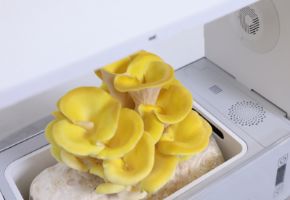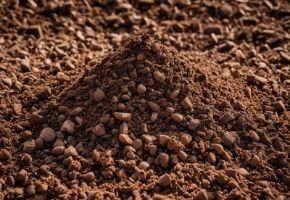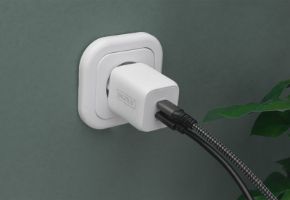Substrate Cyclocibe Cilindracea
The Cyclocibe Cilindracea - Pioppini substrate allows you to easily grow mushrooms inside the Grow Box. Simply make a few cuts on the packaging and place the block inside the machine. Ideal for beginners, it does not require complex sterilization operations or mixing of mycelium and culture soil. Let's discover its features together!
Basic Information
Class: Basidiomycetes
Scientific Name: Cyclocibe Cilindracea
Common Names: Piopparello – Pippino – Peppino
Characteristics
Cap: initially very dark brown and convex, it gradually flattens and the color becomes lighter, but almost always with slightly darker tones towards the center, where it appears slightly raised. It can reach up to 14 cm in diameter. From hemispherical to almost flat, it has a slightly wrinkled surface (cuticle) and often cracked due to dryness, while in humid weather it appears somewhat greasy.
Gills: the gills are dense and thin, white-beige in color, then gray-brownish, and finally tobacco-colored for mature spores.
Stem: highly variable in diameter and height, generally slender, especially in young specimens, flexible, fibrous, and compact.
Ring: persistent, attached high to form an inverted membranous collar, which turns brown when covered by spores released from the gills.
Flesh: white and compact, but darker on the stem and at its base.
Spores: brown-rusty in mass, oval and light brown under the microscope.
Natural habitat
The species is quite adaptable and is well-suited for cultivation on partially buried and moist hardwood logs (e.g., poplar or elder); however, the surrounding soil should not be flooded as excess water can completely inhibit the formation of fruiting bodies. It can also be grown on poplar logs or substrates based on wheat straw or even sawdust. Its growth is rather slow. Pioppini start fruiting from mid-September.
However, this period is not the best for harvesting them, as they are not yet at the optimal stage for collection. The ideal period is approximately from mid-October to mid-November. But now with the grow box, you can extend the fruiting and harvesting period, allowing for harvests even in late spring and early summer!
Cultivation Requirements
Temperature: 16-18°C for mycelium growth, 21-26°C for fruiting
Humidity: 90% during colonization, 70-80% during fruiting
Tips
- Growth stages: most mushrooms have two main growth stages: substrate colonization by the mycelium and fruiting (production of fruiting bodies). These stages often require slightly different conditions.
- Ventilation: in addition to temperature and humidity, proper ventilation is crucial, especially during the fruiting stage. It helps prevent the formation of unwanted molds and bacteria and stimulates the formation of fruiting bodies.
- Substrate: the type and quality of the substrate significantly influence growth. Each species has specific substrate preferences.
- Light: although mushrooms do not perform photosynthesis, many species require a certain amount of light to stimulate fruiting and determine the direction of growth. In this regard, the Grow Box with its lighting bodies is useful for cultivation!
- pH: the pH of the substrate is another important factor. Most mushrooms prefer a slightly acidic environment, with a pH between 5.5 and 6.5. In the case of a ready-to-use substrate like this one, it is not an element you need to worry about as the product is already mixed and inoculated!
- Thermal shock: thermal shock can create problems in mycelium propagation or fruiting, generating molds and contaminants in the substrate, on primordia, or on the mushrooms themselves. Only some species, like Shiitake, benefit from thermal shock (temporary exposure to lower temperatures) to stimulate fruiting.
- Humidity cycles: some growers practice humidity cycles, alternating periods of high humidity with periods of slight drying, to stimulate the production of fruiting bodies. In this case, it will be sufficient to monitor the tray and the display. If the temperature rises excessively and humidity drops below a certain threshold, it is advisable to temporarily turn off the lights.
- Contaminations: controlling temperature and humidity is also crucial to prevent the growth of contaminating organisms such as molds and bacteria. If yellow spots or yellow liquid appear on the substrate, it means the mushroom has come into contact with a contaminant and is reacting by producing an antibiotic substance (the liquid).
- Adaptation: fungal species can slightly adapt to conditions different from optimal ones, but this can affect the yield and quality of the fruiting bodies.
- Constant monitoring: given the sensitivity of mushrooms to environmental conditions, constant and precise monitoring of temperature and humidity throughout the growth cycle is essential. Since the grow box is not only a cultivation tool but also a piece of furniture, you can always keep your mushrooms under surveillance comfortably in your living room!
Organoleptic properties
This edible mushroom is highly collected and sought after, although it has a very peculiar and hard-to-describe smell. Some gourmets compare it to yeast or the "scent of old wine barrels," others to "aged cheese" or "rancid flour." The taste is mild and very aromatic, making it suitable for preservation in oil.
Nutritional properties
From a nutritional standpoint, pioppini are a low-calorie food, providing only 30 kcal per 100 g of fresh product. They do not contain gluten or lactose and can therefore be consumed without problems by those with intolerance to these substances. One of the main benefits of pioppini mushrooms is their high protein content. This makes them an excellent source of plant-based protein for those following a vegetarian or vegan diet.
Additionally, pioppini mushrooms are rich in fiber, which helps maintain a healthy and regular digestive system. They are also a good source of vitamins and minerals, including vitamin D, potassium, and iron. These mushrooms also contain antioxidant compounds that help protect the body from damage caused by free radicals.









